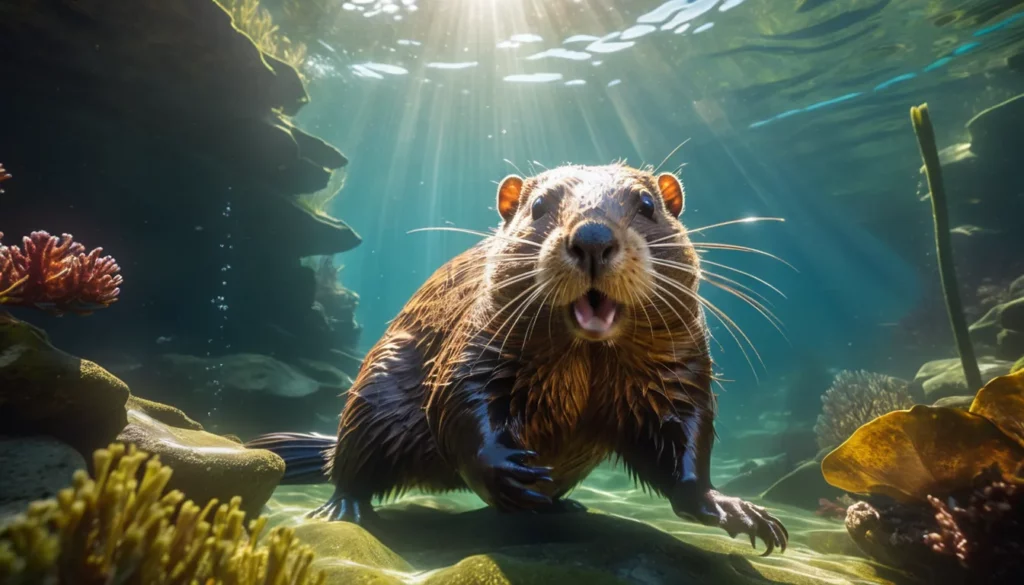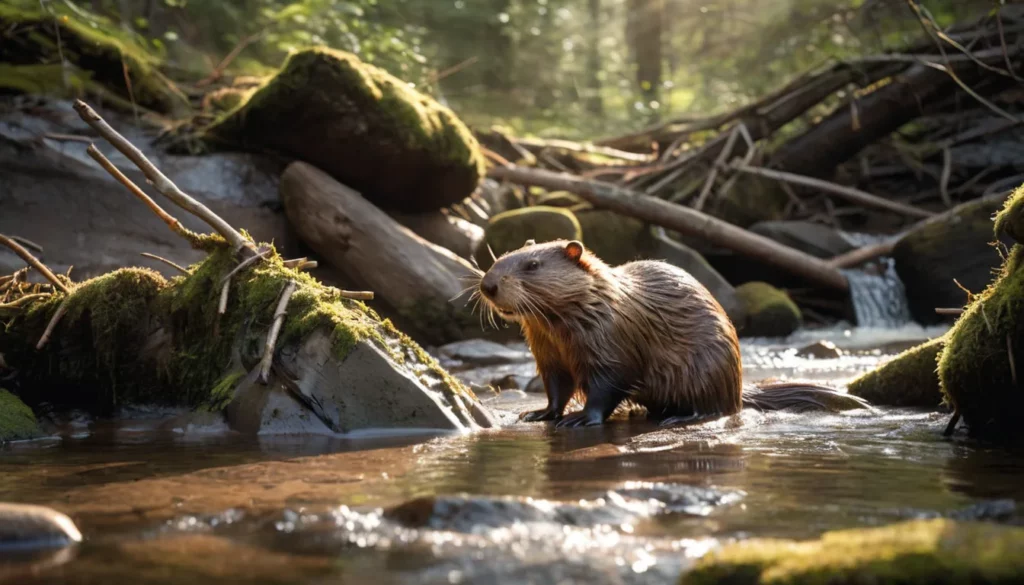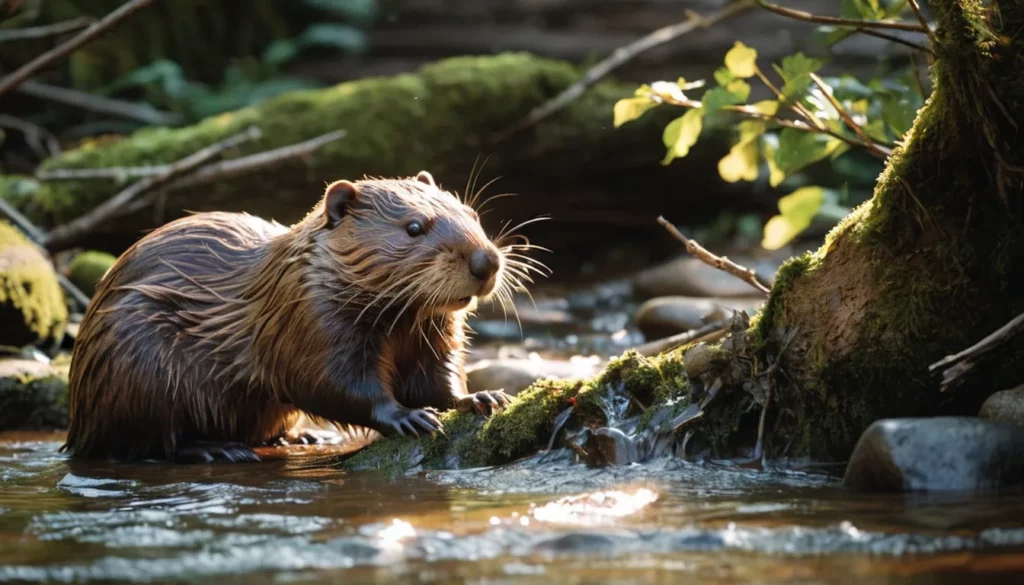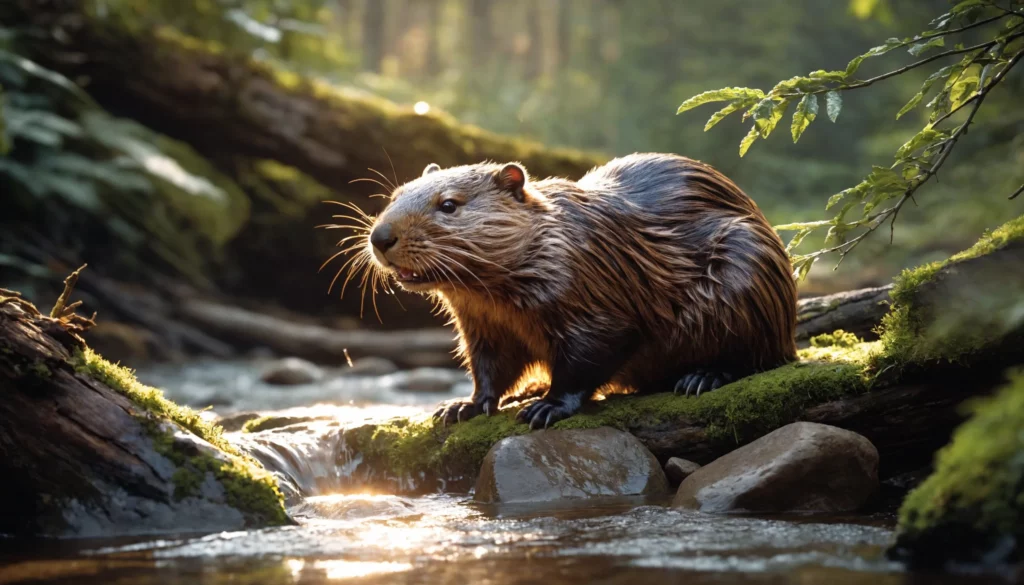10 Weird Facts About Beavers You Probably Didn’t Know

Beavers are semi-aquatic rodents known for building dams, lodges, and canals. But there’s a lot more to these ecosystem engineers than their construction skills. Here are 10 fascinating and weird facts you probably didn’t know about beavers!
1. Beavers have transparent eyelids that act as “goggles”

Beavers have a transparent third eyelid called a nictitating membrane that functions like built-in goggles. This allows them to see clearly underwater even when their eyes are open. The nictitating membrane sweeps horizontally across the eye to keep it moist and protected.
2. Beavers’ tails work as a rudder and a warning system
A beaver’s large, flat tail serves many purposes. They use it as a rudder when swimming and it helps them balance when moving on land. Beavers also slap their tails against the water to warn other beavers of danger – the loud “slap” can be heard from far away.
3. Their front teeth never stop growing
Like all rodents, a beaver’s incisors constantly grow throughout its lifetime. They gnaw on wood to file down their teeth and keep them at an optimal length. A beaver can chew through a 6-inch sapling in minutes! Their orange-colored front teeth are coated in tough iron-reinforced enamel.
4. Beavers secrete a vanilla-scented oil
Beavers have sacs near their anal glands that produce castoreum, a viscous brown fluid that smells like vanilla or raspberry. They use this secretion, along with urine, to mark their territory. Castoreum has been used as a natural flavoring and perfume additive.
5. Baby beavers are called kits

A baby beaver is called a kit. Female beavers typically give birth to 3-4 kits in the spring. Kits can swim right after birth and they quickly learn to swim and gnaw on wood from their parents.
6. Their dams are visible from space
Beaver dams can stretch for hundreds of meters. The largest known beaver dam is located in Wood Buffalo National Park in Alberta, Canada, and is a staggering 800 meters long – more than half a mile! It’s so big that it’s visible from space in satellite images.
7. They were once parachuted into forests
In the 1940s, wildlife officials in Idaho needed to relocate beavers to new habitats. Their solution? They boxed up live beavers and parachuted them into remote forest areas. Over 70 beavers successfully parachuted into the wilderness!
8. Beavers thrived during the last Ice Age
Giant prehistoric beavers called Castoroides lived in North America during the Pleistocene Epoch. These massive creatures weighed up to 220 lbs – more than double the size of modern beavers!
9. Beavers are an invasive species in Europe
Although native to North America, beavers were hunted to extinction in Europe over 400 years ago. Recently, conservationists reintroduced beavers to several European countries. But without natural predators, these beaver populations are booming, causing damage to farmland and wild areas.
10. They benefit the environment
By building dams and ponds, beavers create new aquatic habitats and wetlands that support fish, waterfowl, amphibians, and more. Their dams help reduce erosion and maintain water tables. Beavers are considered a “keystone species” because they provide essential ecosystem services.

FAQ
Do beavers have any special adaptations for seeing underwater?
Yes, beavers have a transparent third eyelid called a nictitating membrane that functions like built-in goggles, allowing them to see clearly underwater.
What’s unique about a beaver’s tail?
A beaver’s large, flat tail serves multiple purposes. It acts as a rudder when swimming, helps them balance on land and can be slapped on the water as a warning system.
Do beavers’ teeth ever stop growing?
No, beavers’ front teeth continually grow. They manage the length by gnawing on trees and other materials.
Did beavers really get parachuted into forests?
Yes, in historical times, beavers were sometimes parachuted into forests for reintroduction and conservation efforts.
How do beavers benefit the environment?
Beavers play a crucial role in the environment by building dams and ponds and creating aquatic habitats that support various wildlife. Their dams also help reduce erosion and maintain water tables.

Beavers are truly remarkable animals. From their incredible engineering abilities to their many weird adaptations, there’s much more to these rodents than meets the eye. Next time you see a beaver or beaver dam, take a moment to appreciate these furry ecosystem custodians!





